Top 5 Best Zapier Alternatives in 2024

Zapier is a cloud-based automation platform designed to streamline workflows and create integrations between your favorite apps. As one of the leading automation platforms in the market, Zapier allows users to effortlessly connect multiple services, set up data exchanges, or create complex workflows that bring several tools together. However, with the growing demand for automation solutions, many zapier competitors and zapier alternatives free options have emerged, offering unique features and pricing models. This has led to an increasing interest in zapier vs other platforms comparisons.
It’s surprisingly simple: you link apps with just a few clicks, then create workflows using triggers (events that start the process) and actions (what should happen in response). For instance, you can set up a workflow where a Facebook post is automatically published every time your SMM manager marks a related task as “Done” in ClickUp. This type of workflow automation is just one example of what Zapier and tools like zapier can accomplish using app connectorsand integration capabilities.
Table of Contents
- The best Enterprise-Grade alternative — Tray.io
- The best Cost-Effective alternative — Albato
- The best Quick and Simple alternative — Integrately
- The best Best Self-Hosted alternative — Activepieces
- The best All-in-One No-Code alternative — Appy Pie
What Makes a Zapier Alternative Best?
To understand what makes a great alternative, we should revisit the key value Zapier offers to many teams. While there’s no single “best” platform—only the one that best fits your needs—here are the factors that made Zapier such a hit and what to look for in apps like zapier:
1. More Affordable Pricing
Zapier was created as a cost-effective alternative to programming custom integrations, which can be prohibitively expensive for many companies. However, as Zapier has grown in popularity, so have its prices. When exploring zapier alternatives free or paid options, ensure that the platform delivers a solid return on investment, offers features you actually need, and doesn’t consume a budget better spent on acquiring users or customers. Many companies like zapiernow offer competitive pricing plans that cater to various business sizes and needs, often with different tiers based on the number of tasks per month.
2. Speed of Implementation and Ease of Use
Zapier’s success lies in its simplicity and speed, saving teams hours that would otherwise go toward development. While competitors are stuck negotiating with their IT departments or hunting for developers on Upwork, your team could already have a Zapier-powered solution live and working. If your experience with Zapier feels cumbersome lately or you’re looking for an even faster, more intuitive tool, prioritize alternatives that offer easy setup, user-friendly workflows, and an interface designed to streamline your processes. Many zapier competitors now offer intuitive drag-and-drop interfaces for creating custom workflows and managing integrations.
3. Advanced Capabilities
Modern Zapier alternatives are far more than simple data connectors. Today’s iPaaS (Integration Platform as a Service) tools can handle tasks like API health monitoring, bidirectional data sync, API connection, and deep app integrations. Before you commit to an alternative, clearly define your needs—there might be specialized platforms perfectly tailored to your use case, whether that’s marketing automation, data processing, or CRM integration. Some alternatives even offer AI-powered automation capabilities, pushing the boundaries of what’s possible in workflow automation.
While Zapier is often the go-to choice for building no-code integrations, it’s just one player in a growing iPaaS market. As of 2024, there are countless sites like zapier catering to different needs and budgets, making it a great time to find the perfect fit for your team. Whether you’re looking for a zapier free alternative or a robust enterprise solution, the market offers a wide range of options, including platforms like Make, IFTTT, Workato, and Pabbly Connect.
Top 5 Best Zapier Alternatives in 2024
1. Tray.io — The Enterprise-Grade Zapier Alternative
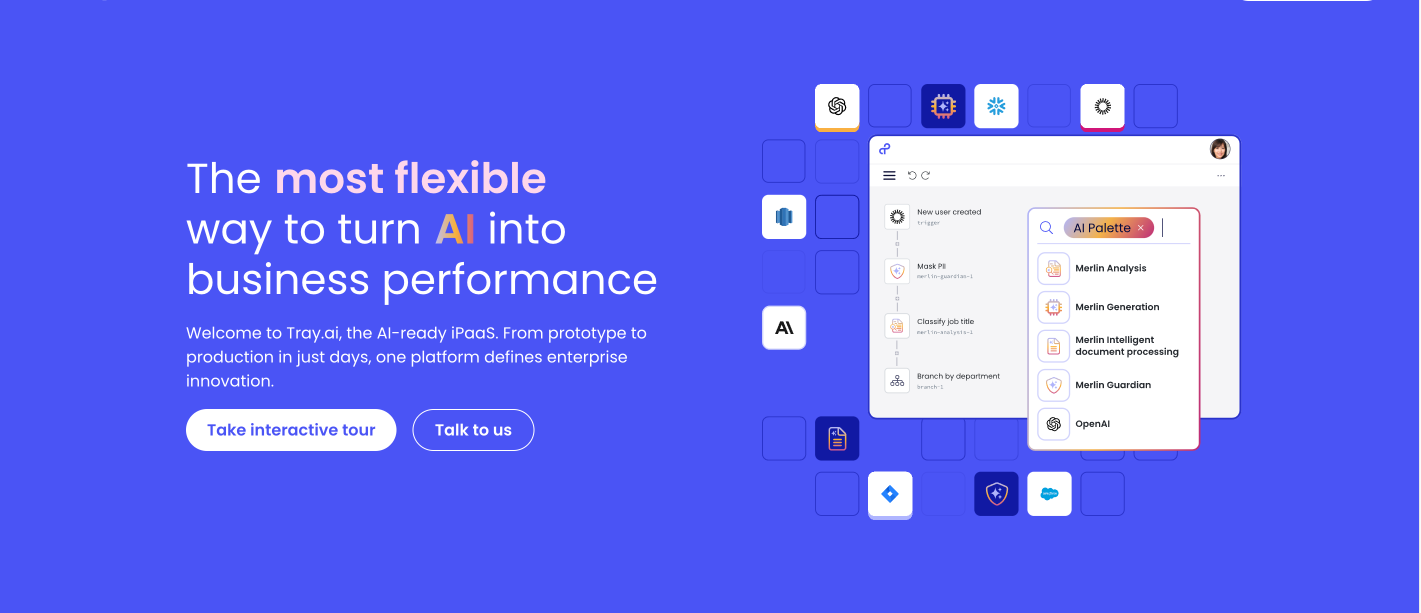
Tray.io is the ultimate Zapier alternative for companies that have outgrown basic automation tools and need a more advanced, enterprise-level solution. If budget isn’t a concern and you’re willing to pay for premium features, Tray.io delivers enterprise-grade operations and scalability.
Advanced Visual Editor
Tray.io offers a powerful visual workflow builder that provides a comprehensive view of your automation processes. You can see every condition, branch, and parallel action in a clear interface, dragging and connecting blocks to create complex workflows. While Zapier has recently improved its editor, Tray.io‘s design remains superior for managing intricate processes and integrations.
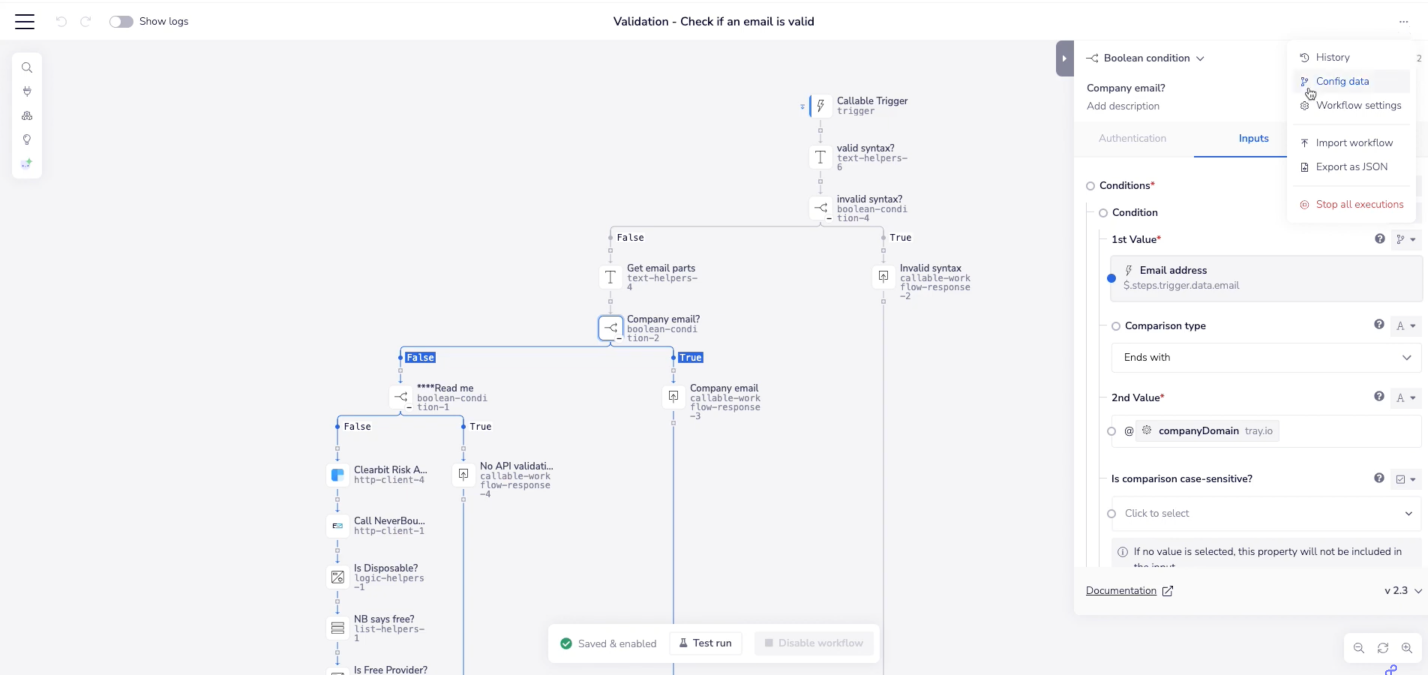
Smart Automation with Merlin AI
Merlin AI is a standout feature that sets Tray.io apart from Zapier and other zapier competitors. This built-in AI assistant simplifies the process of creating integrations. It suggests logical next steps based on your previous actions, flags errors in your workflows, and can even generate necessary code or API requests. For example, when integrating Google Sheets, Merlin can recommend automatically adding a data row. If there’s a logic gap in your workflow (e.g., forgetting to specify a data source), Merlin highlights the issue and provides a fix.
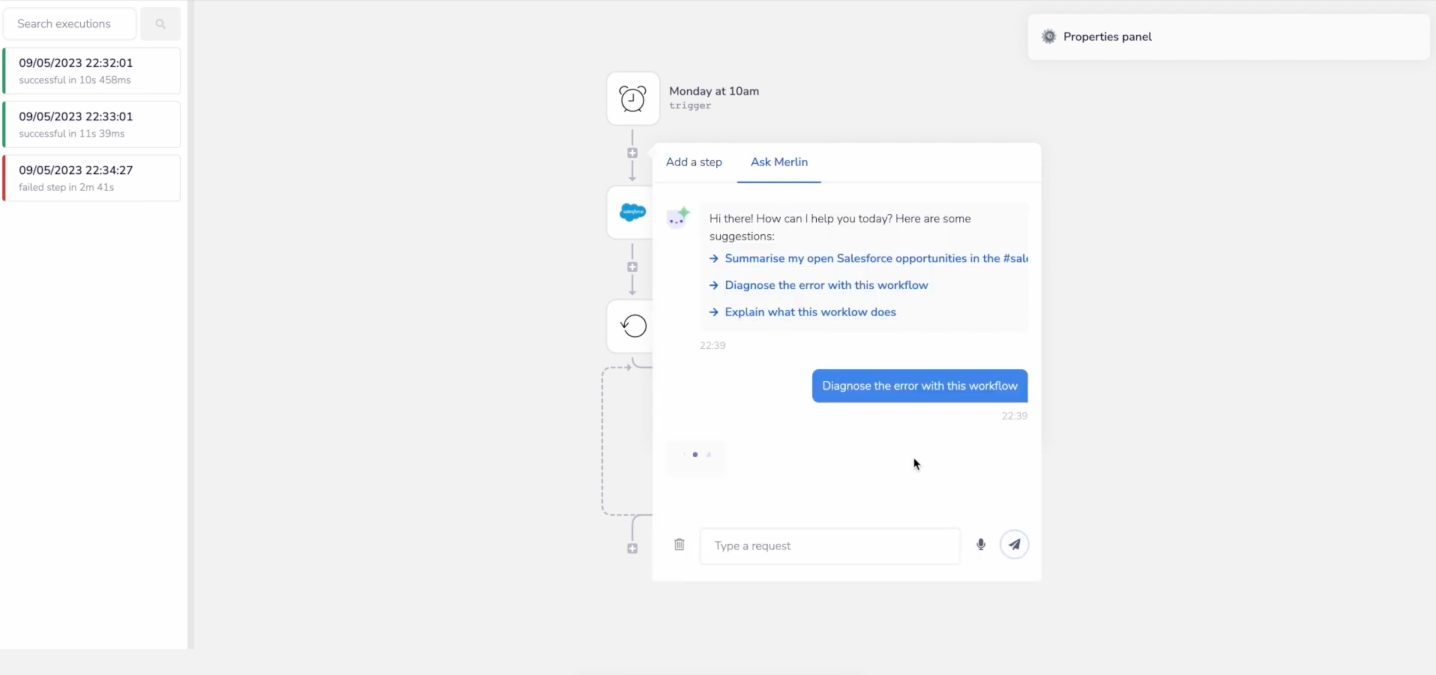
API Management
Unlike Zapier, which primarily focuses on pre-built integrations, Tray.io provides robust API and coding tools. You can create and manage custom APIs, with support for authentication methods like OAuth, and monitor performance in real-time. The platform also supports webhooks for real-time data exchange between applications, making it a powerful tool for complex integrations.
Pricing:
Pricing depends on factors like usage intensity (data volume processed and transferred monthly) and additional add-ons. Generally, expect costs between $1,000 and $2,000 per month, which includes a high number of tasks per month.
2. Albato — A Cost-Effective Zapier Alternative
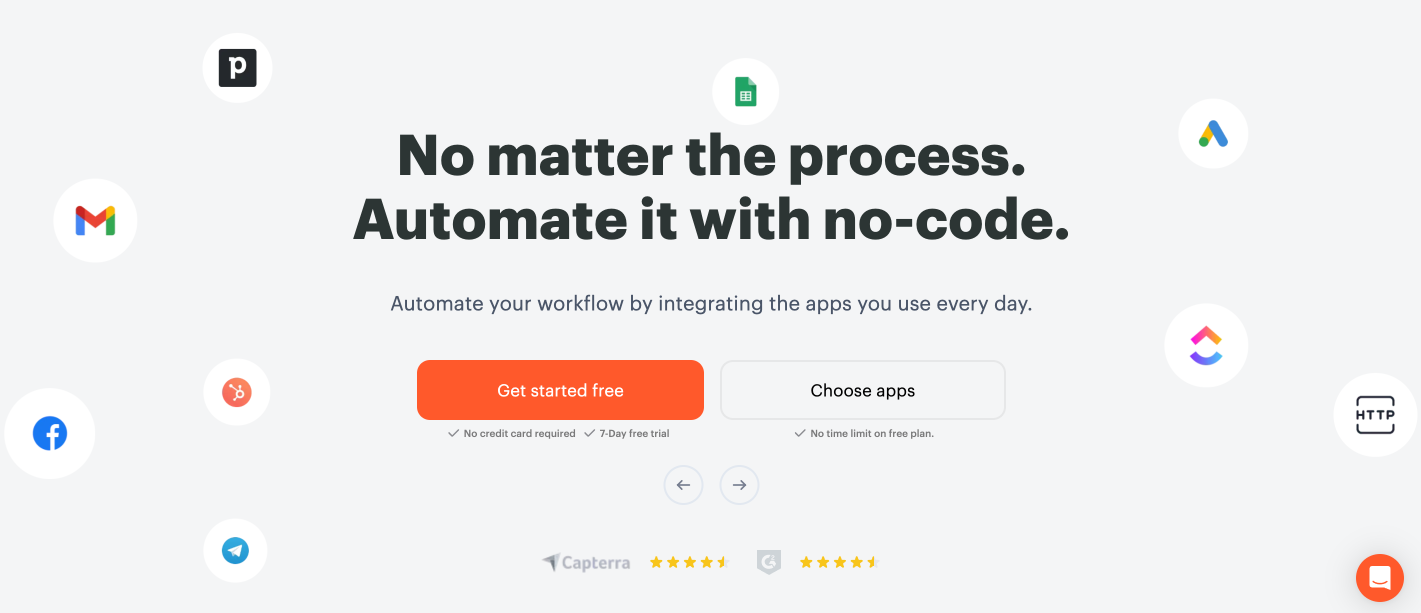
Albato is the perfect alternative for companies looking to reduce automation costs without compromising functionality. If you feel Zapier’s pricing has become too steep and eats into your budget for marketing or sales, Albato is the solution for you. Recognized as one of the top platforms by G2 and Capterra in 2023 and 2024, Albato has quickly earned trust across industries.
Comprehensive Automation Toolkit
Albato covers nearly all the features of Zapier, offering a straightforward, linear interface for building automations. It supports over 800 apps, including major players like Microsoft, Google, Zendesk, and modern AI tools. With Albato, you can create workflows of any complexity, complete with data processing, conditional logic, and branching via routing tools.
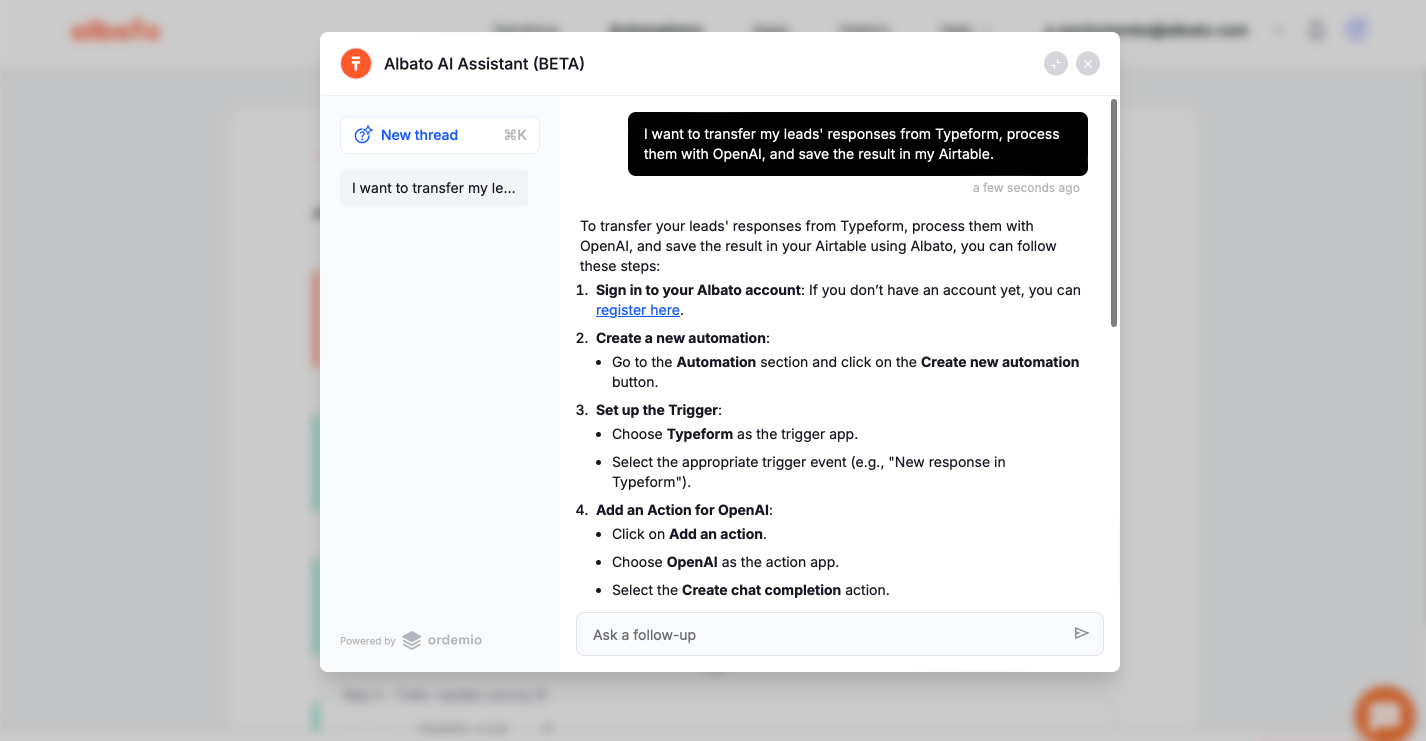
Advanced Developer Features
For teams that need more customization, Albato allows you to embed your own code into workflow steps and add custom API requests. A standout advantage is the ability to integrate any app with an API, regardless of your plan. This is particularly valuable for companies with proprietary tools or niche software needs, offering flexibility similar to Active Pieces, a popular zapier alternative.
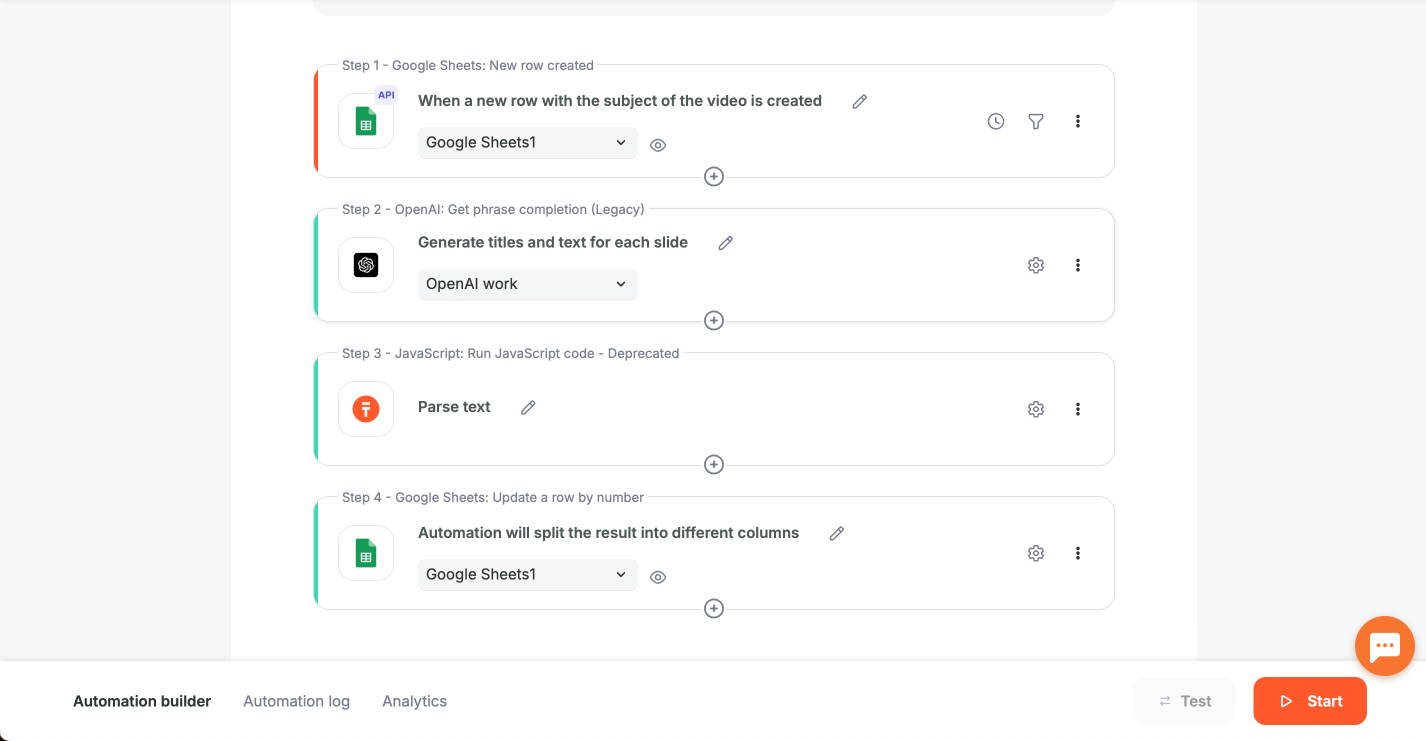
Premium-Level Support on Any Plan
Albato’s support is a major highlight. User reviews consistently praise the speed and quality of assistance. Real-time help is available through live chat, with experts ready to assist in migrating workflows from Zapier or setting up your specific use case.
Pricing:
Albato offers significant savings, with costs averaging 40–60% less than Zapier for comparable plans. A free trial is available for testing the platform. Basic pricing starts at $13 for 1,000 tasks, making it an affordable option for small and medium businesses looking for a zapier free alternative.
3. Integrately — The Zapier Alternative for Quick and Simple Integrations
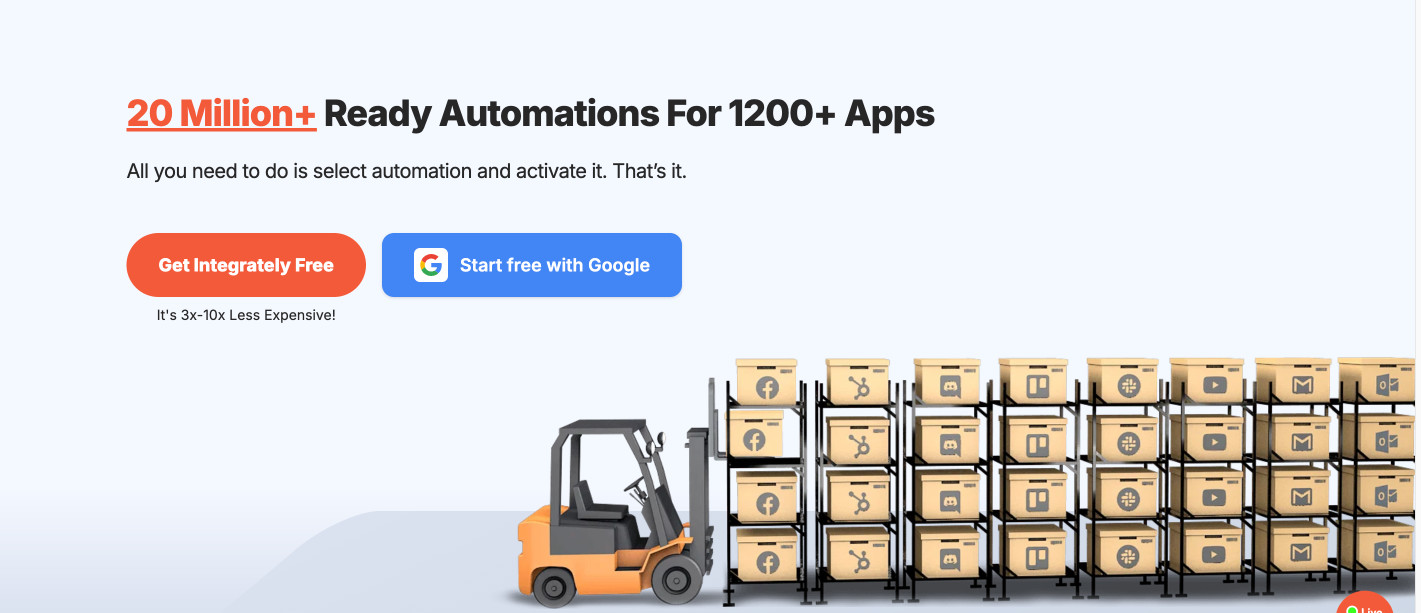
Integrately is the ideal Zapier alternative for those who prefer not to build integrations from scratch. If your needs revolve around straightforward workflows with 2–3 steps, and you’re in marketing or sales where speed matters more than extensive customization, this platform is made for you.
Simplified Setup Process
Unlike Zapier, where you often need to configure every step manually, Integrately focuses on extreme simplicity. Its editor interface is intuitive, though more linear, which might seem less flexible at first. However, the lack of complex settings prevents confusion, allowing you to set up basic automations in just minutes.
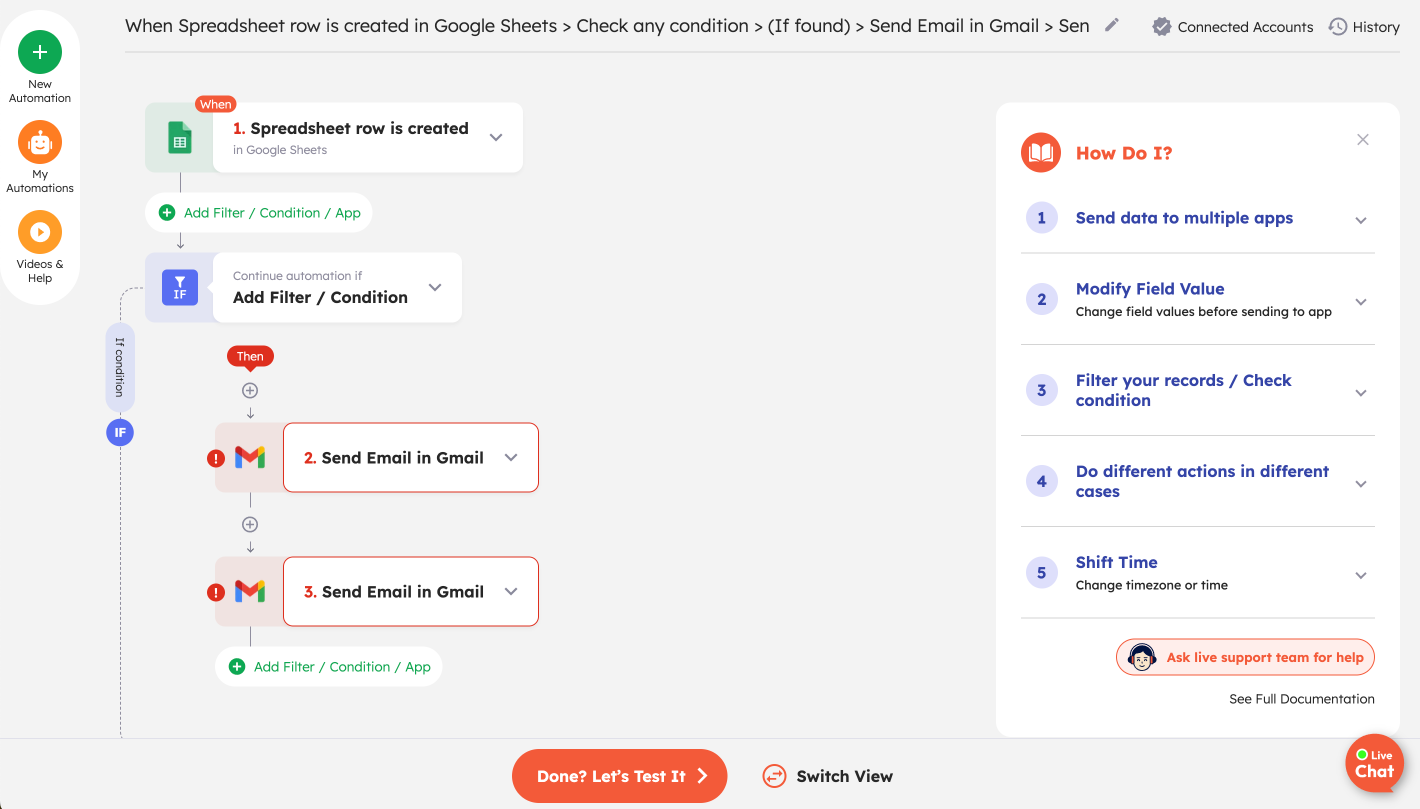
The Largest Library of Pre-Built Automations
Integrately’s standout feature is its massive library of 20+ million pre-built workflows. Instead of starting from zero, you can choose a ready-made template and activate it in just three clicks. Supporting over 1,200 apps, this platform is a game-changer for quickly launching typical workflows without heavy configuration.
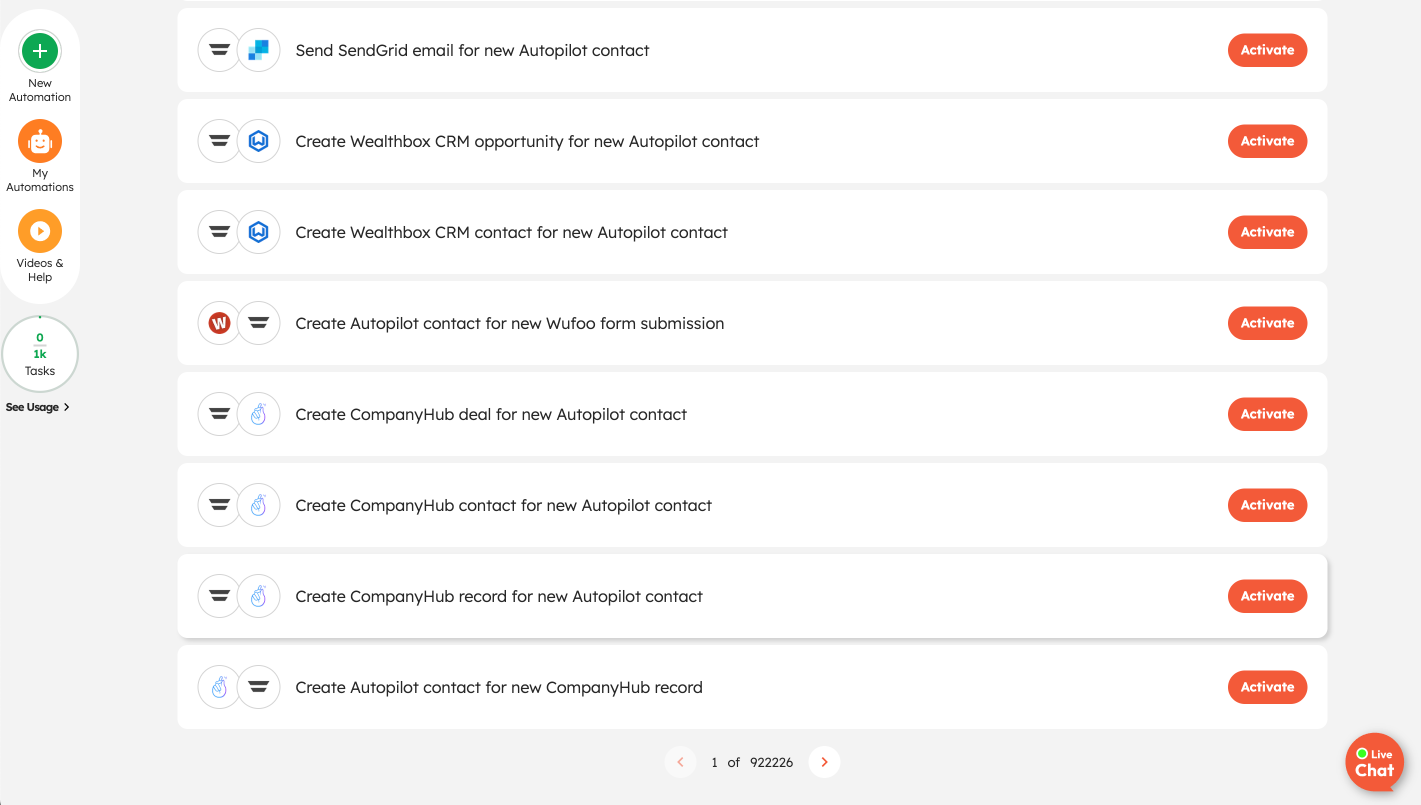
Pricing:
Integrately offers affordable plans starting at $19 per month, significantly lower than Zapier’s entry-level pricing. Even on paid plans, Integrately maintains an impressive balance of cost and functionality, making it a budget-friendly option for teams seeking simplicity and speed.
4. Activepieces — The Best Self-Hosted Zapier Alternative
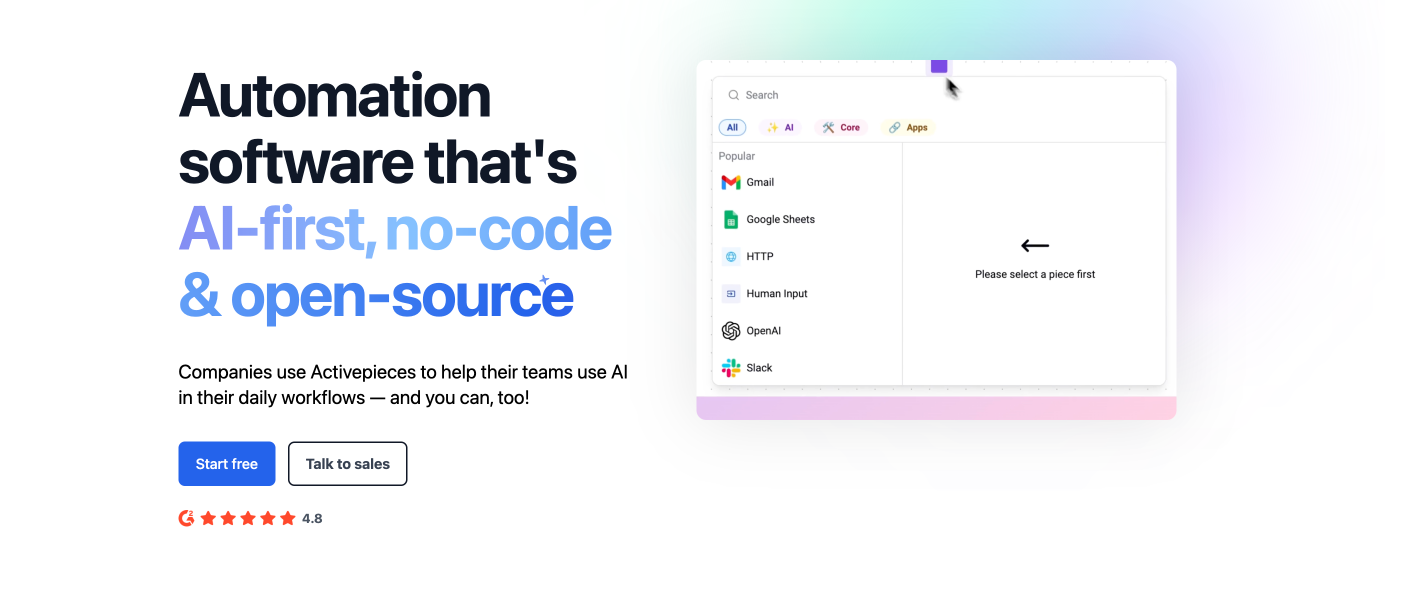
Activepieces is the go-to solution for teams seeking self-hosted automation without compromising on usability, speed, or a gentle learning curve. If you find alternatives like n8n overly complex, Activepieces offers a streamlined and user-friendly experience that’s perfect for businesses prioritizing control and customization.
Modern Visual Workflow Editor
Unlike Zapier’s sometimes cluttered interface, Activepieces features a sleek and intuitive drag-and-drop editor. You can easily create automations by dragging blocks and configuring them with a clear, modern UI. The platform supports a wide range of triggers, from app events to webhooks and schedules, as well as advanced features like conditions, loops, and delays.
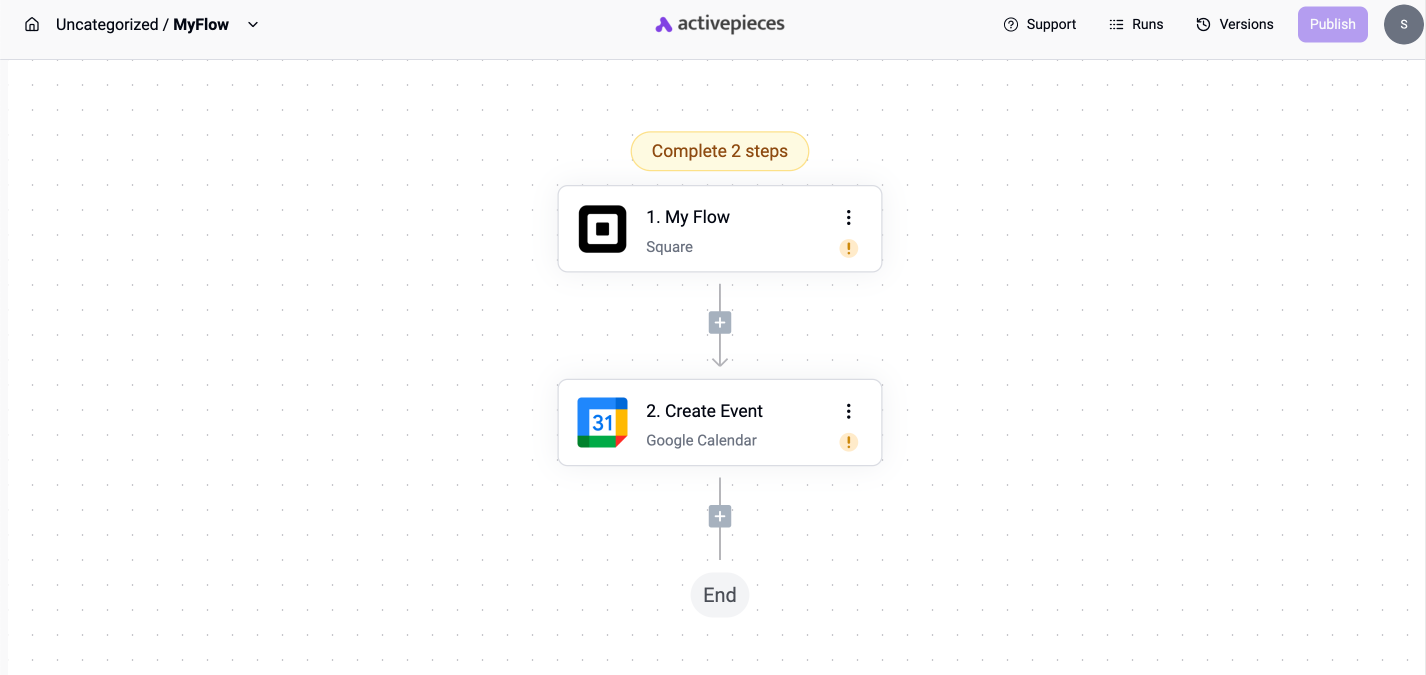
Advanced Data Handling
Activepieces excels in data manipulation with tools like a built-in JSON parser, format converters, and a rich set of data processing functions. From basic operations with strings, numbers, and dates to advanced techniques like bulk processing via map/filter/reduce and custom JavaScript functions, the platform is designed to handle complex data scenarios and integrations.
Open Source Benefits
What truly sets Activepieces apart is its open-source nature. The entire codebase is available on GitHub, offering unparalleled flexibility for businesses. You can deploy the platform on your own servers, ensuring full control over your data and processes—critical for companies with stringent security and privacy requirements.
Pricing:
Activepieces follows a “Pay as you go” model, with no long-term commitments. Pricing typically starts at $1,200/month, making it an excellent option for enterprises seeking a secure and customizable automation solution.
5. Appy Pie — The Best All-in-One No-Code Platform and Zapier Alternative
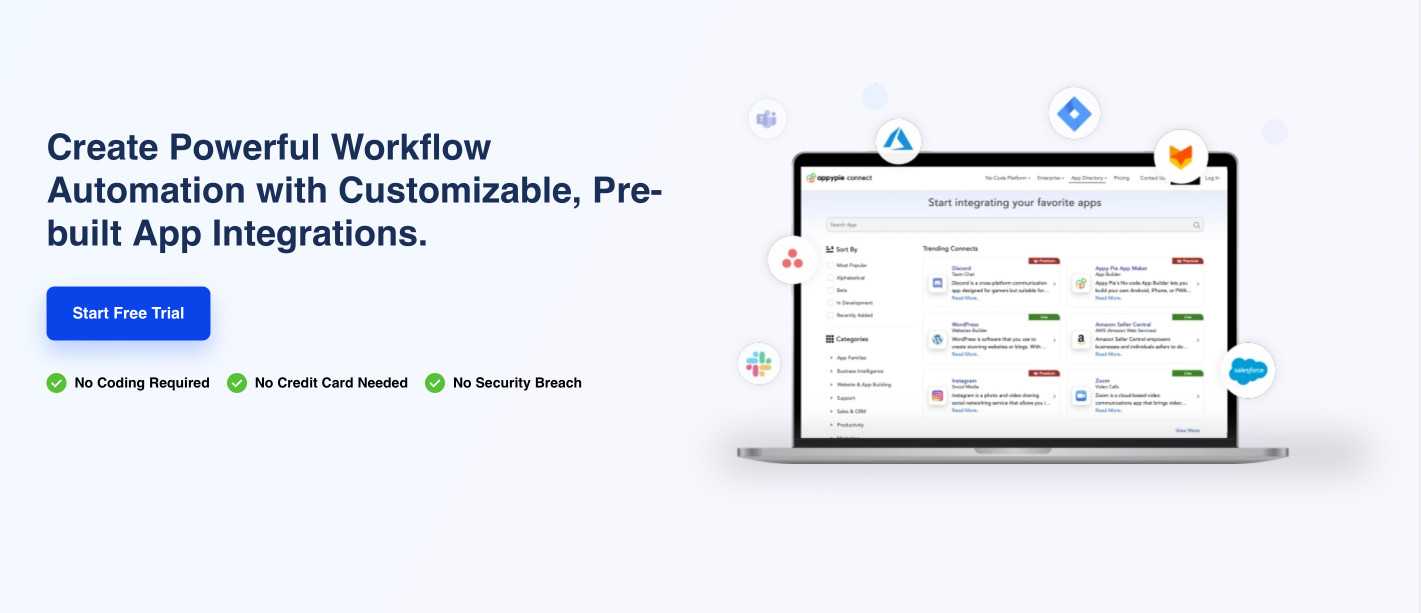
Appy Pie is the perfect choice for businesses that need more than just an automation tool. If you’re looking for a no-code platform that also lets you build mobile apps, websites, and chatbots—all within a single ecosystem—this is the solution for you. Appy Pie Automate, their automation tool, complements the platform’s other offerings.
Interface and Workflow
Appy Pie’s automation editor resembles Integrately, using a linear approach for building workflows. The top menu provides access to core features, including creating new automations, managing existing integrations, and adjusting account settings. Workflows are constructed by connecting apps step by step, with settings, triggers, conditions, and data transformations configured in the right-hand panel.
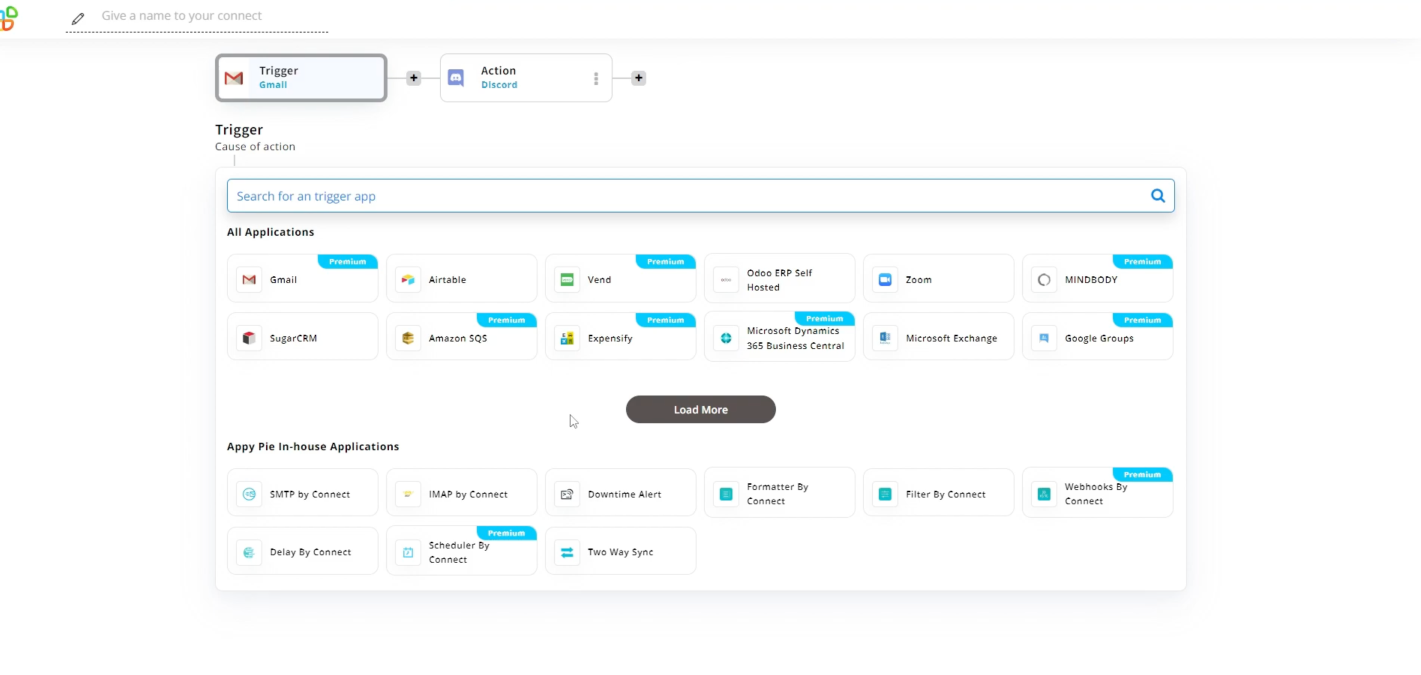
A Complete Ecosystem
If you’ve ever worked with products from a unified family — like Zoho Flow, Zoho CRM, and Zoho Meetings—you know how convenient it is to have interconnected tools. Appy Pie takes this convenience further by offering an integrated suite of no-code tools at a far more affordable price than Zapier’s add-ons. Here’s what you get:
- Mobile Development: Build Android and iOS apps with over 200 features, including push notifications, social media integrations, and in-app purchases.
- Web Development: Create fast, SEO-optimized websites with a drag-and-drop builder.
- Chatbots: Design chatbots for messengers and websites to automate customer support and streamline communication.
- Graphic Design: Access tools for creating logos, banners, and other marketing materials.
Pricing:
Appy Pie’s pricing is incredibly competitive: automation plans start at $12/month, while access to the app and website-building tools costs an additional $16/month. This all-in-one approach is a game-changer if you plan to use multiple products, offering unmatched value compared to separate tools.
Key Recommendations
Selecting the best Zapier alternative for your business in 2024 depends on your specific needs. Here are some tips to guide your decision:
- Evaluate Your Actual Needs: Assess the volume of tasks and features you require. Avoid overpaying for features you won’t use.
- Plan for Growth: Choose a platform that can scale with your business as it evolves.
- Check Support and Documentation: High-quality support and clear documentation are crucial when implementing new workflows.
- Ensure Compatibility with Your Tech Stack: Verify that the platform integrates seamlessly with the tools you already use.
The 2024 market for Zapier alternatives offers solutions for every need and budget. Whether you’re looking for a platform better than zapier or just a similar to zapier option with different features, there’s likely a perfect fit for your business. Each of these platforms offers unique features and pricing models that might align better with your specific business process automation needs.
When comparing options, look at factors like the number of tasks per month included in each plan, the availability of multi-action bots for complex automations, and support for webhooks and advanced API connections. Some platforms might offer specialized features for marketing automation or data sync that could be particularly valuable for your use case.
Remember, the goal is to find a tool that not only replaces Zapier’s functionality but potentially offers more value through additional features, better pricing, or improved ease of use. By carefully evaluating your options and considering your long-term automation needs, you can select a platform that will help streamline your workflows and boost productivity for years to come.
More articles
- Comparative analysis of top 6 Chili Piper alternatives
- 7 best Patreon alternatives for creators 2025
- How to create an online course that enhance your customer experience
- Top productivity hacks and tools for marketing teams
- Top strategies for effective customer engagement
- Valuable hints to the beneficial customer feedback analysis
- Starting an affiliate marketing store — quick guide
- Unlocking growth in app marketing: Monetization guide for app owners


![The ultimate guide to growth marketing in 2025 [explained by a growth hacker]](https://www.dashly.io/blog/wp-content/uploads/2023/04/The-ultimate-guide-to-growth-marketing-explained-by-a-growth-hacker-720x317.png)





